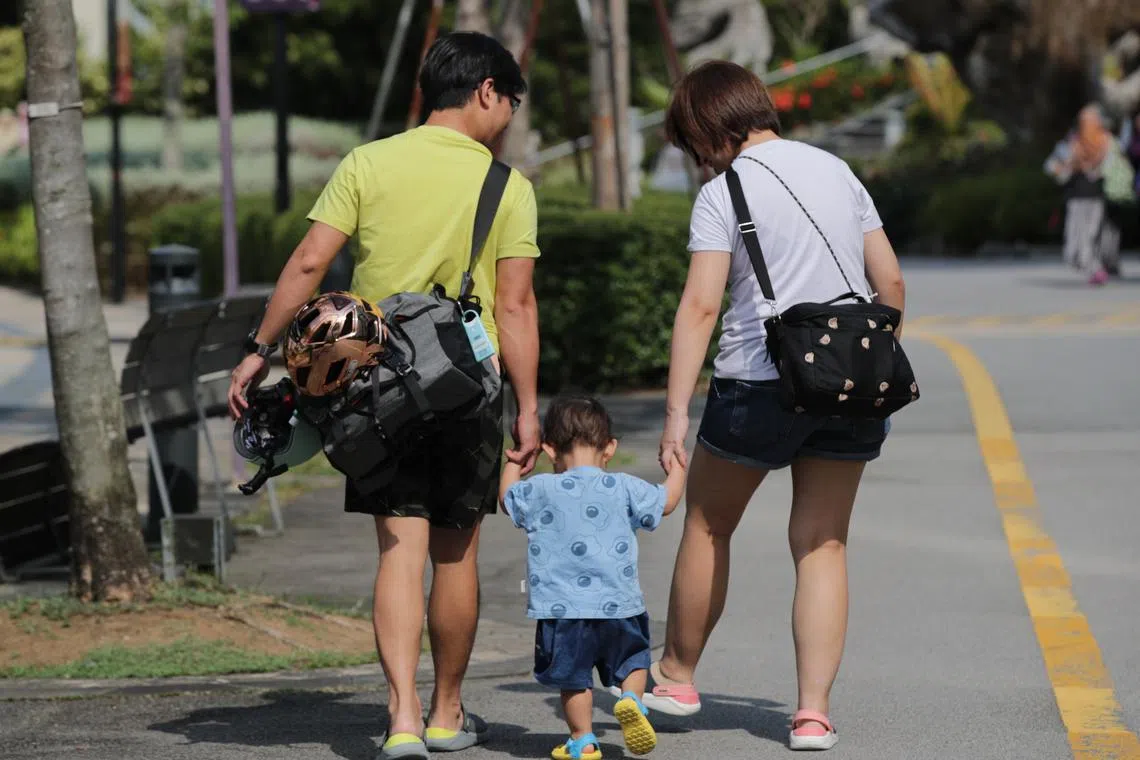CDAC spent more than $31 million to help 16,600 households in 2022
Sign up now: Get ST's newsletters delivered to your inbox

For 2023, the aim is to enrol 100 K1-2 children through a nine-month play-based learning programme.
ST PHOTO: GIN TAY
Follow topic:
SINGAPORE – The Chinese Development Assistance Council (CDAC) reached out to help 16,600 households in 2022, spending a total of $31.63 million.
It gave out over 11,600 bursaries, and more than 12,400 tuition places, across its CDAC centres and partner schools in 2022.
It also supported 1,800 households through case management. These are mainly households that have school-going children and are in greater need of assistance.
CDAC also engaged 220 community partners in 240 collaborative projects.
The overall expenditure in 2022 was slightly less than in 2021, when $32.6 million was spent to help 17,700 households.
Speaking at CDAC’s 31st Annual General Meeting at its Tanjong Katong headquarters on Friday, CDAC chairman Ong Ye Kung said in Mandarin that the self-help group has supported students in challenging family circumstances through its tuition and mentoring programmes to promote social mobility.
He identified education as a key area where CDAC could help the community most.
“In an open and meritocratic society like Singapore, our young can go far if they leverage their talent and work hard,” said Mr Ong, who is also Health Minister. “CDAC will continue to do its best to maximise opportunities for our young, regardless of backgrounds.”
CDAC embarked on three educational initiatives in 2022 to better support children from low-income families.
The first is using play-based learning to enhance communication and creativity. The 10-week pilot was conducted with 11 children.
For 2023, the aim is to enrol 100 K1-2 children through a nine-month play-based learning programme.
Play- and activity-based learning was also piloted with 40 Primary 1 pupils, focusing on English, mathematics and Chinese. The pilot also extends to 24 Primary 3 pupils for science.
The second is a long-term mentoring programme, focused on developing socio-emotional competencies, to support children from low-income families as they transition from primary school to their post-secondary years.
CDAC has established partnerships with Teck Whye and Dazhong primary schools, and one upcoming partnership with Ang Mo Kio Primary School. It has developed a specific CDAC mentorship approach and accreditation system.
Thirdly, CDAC is broadening learning for its beneficiaries. This includes providing counselling and family engagement support for 60 children and youth. It has also developed a series of life-skills programmes such as resume writing, interview skills and grooming.
Close to 500 CDAC students are also using artificial intelligence (AI) platforms called Scribo for English and Cerebry for mathematics. The students receive personalised training and feedback powered by AI, which allow tutors to follow up with targeted support to close learning gaps.
CDAC is exploring the use of other edtech tools to engage students in their acquisition of knowledge and skills.
To help upgrade the skills and capability of teachers, CDAC will also be working on a joint learning fiesta with the other self-help groups – Mendaki, Sinda and the Eurasian Association – for the first time.
About 500 educators will share best practices at the half-day event, to be held in November.
Mr Ong said that despite the Covid-19 pandemic in the last few years, CDAC had made much progress.
For example, it renovated its headquarters in Tanjong Katong, and in 2022, it also launched the myCDAC portal, which processes all tuition and bursary applications.
Most of CDAC’s resources are an accumulation of monthly donations by members of the Chinese community here.
Dr Chen told ST that it is setting aside $38 million to support about 17,000 households in the current financial year.
Said Mr Ong: “Even as the Government implements many social programmes with much higher budgets that are race-neutral, there is still a role for community self-help. It is part of identity consciousness that makes us a multi-racial nation.”

